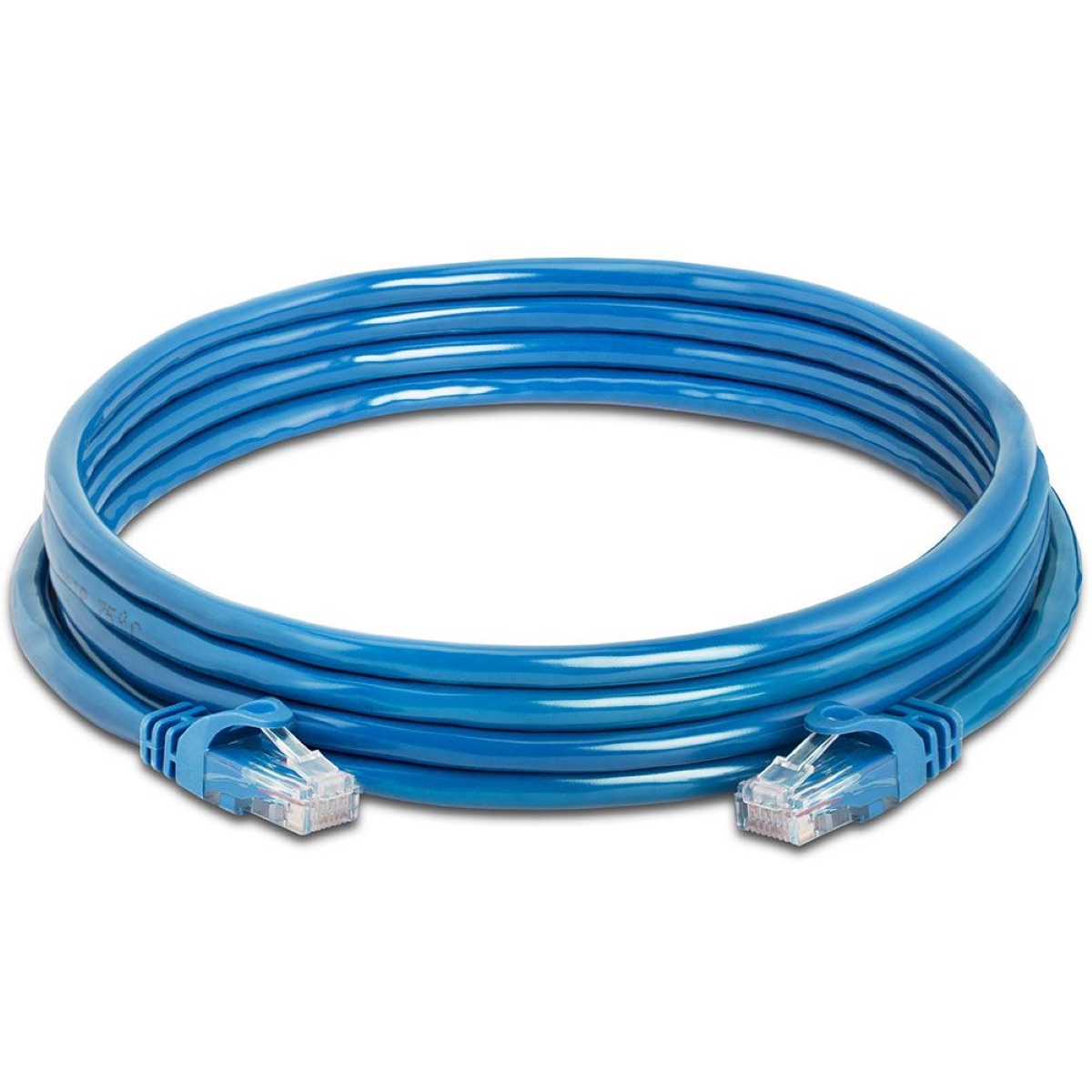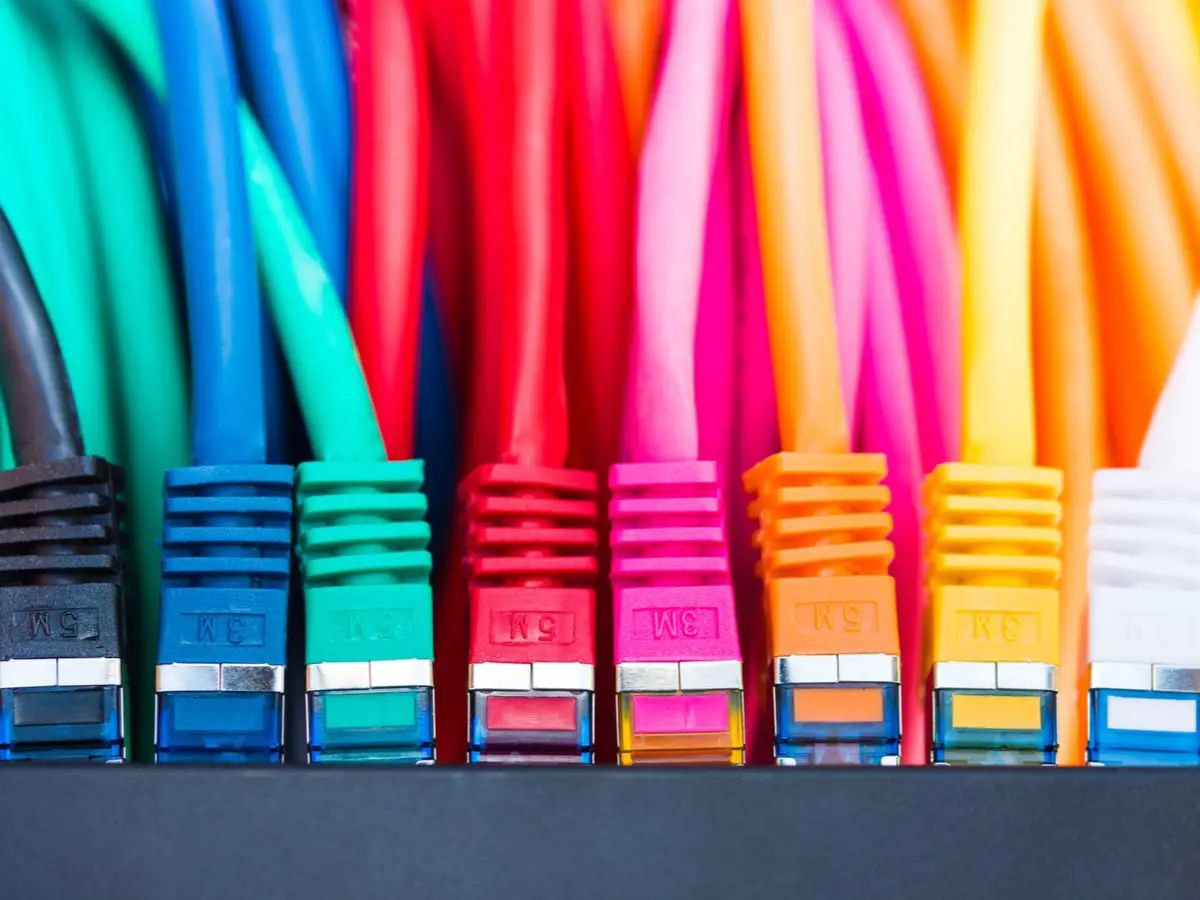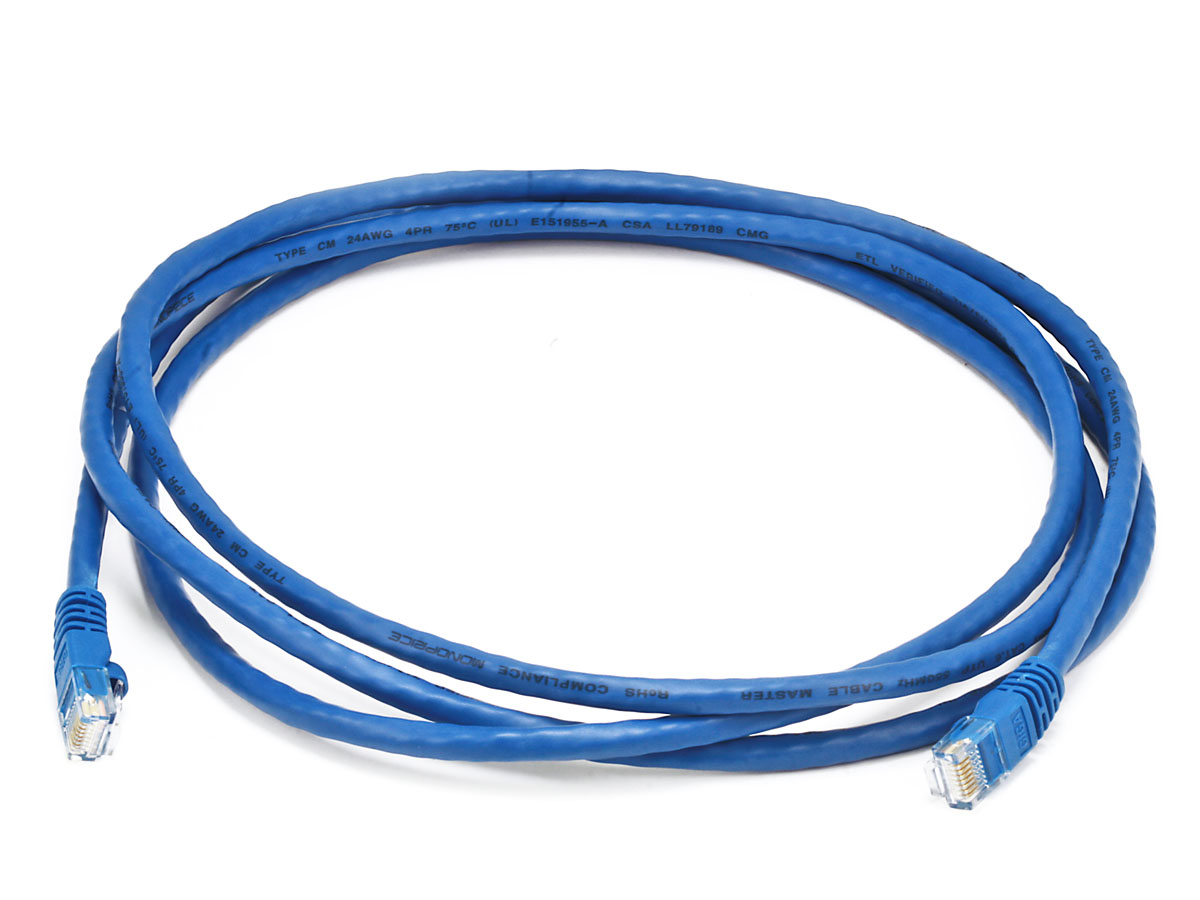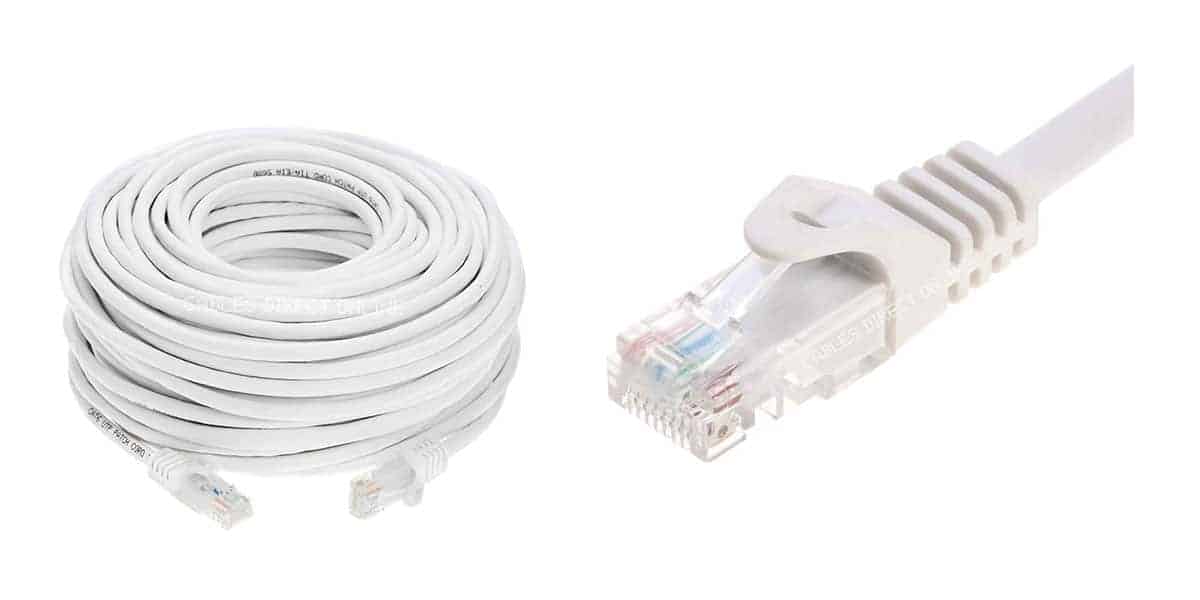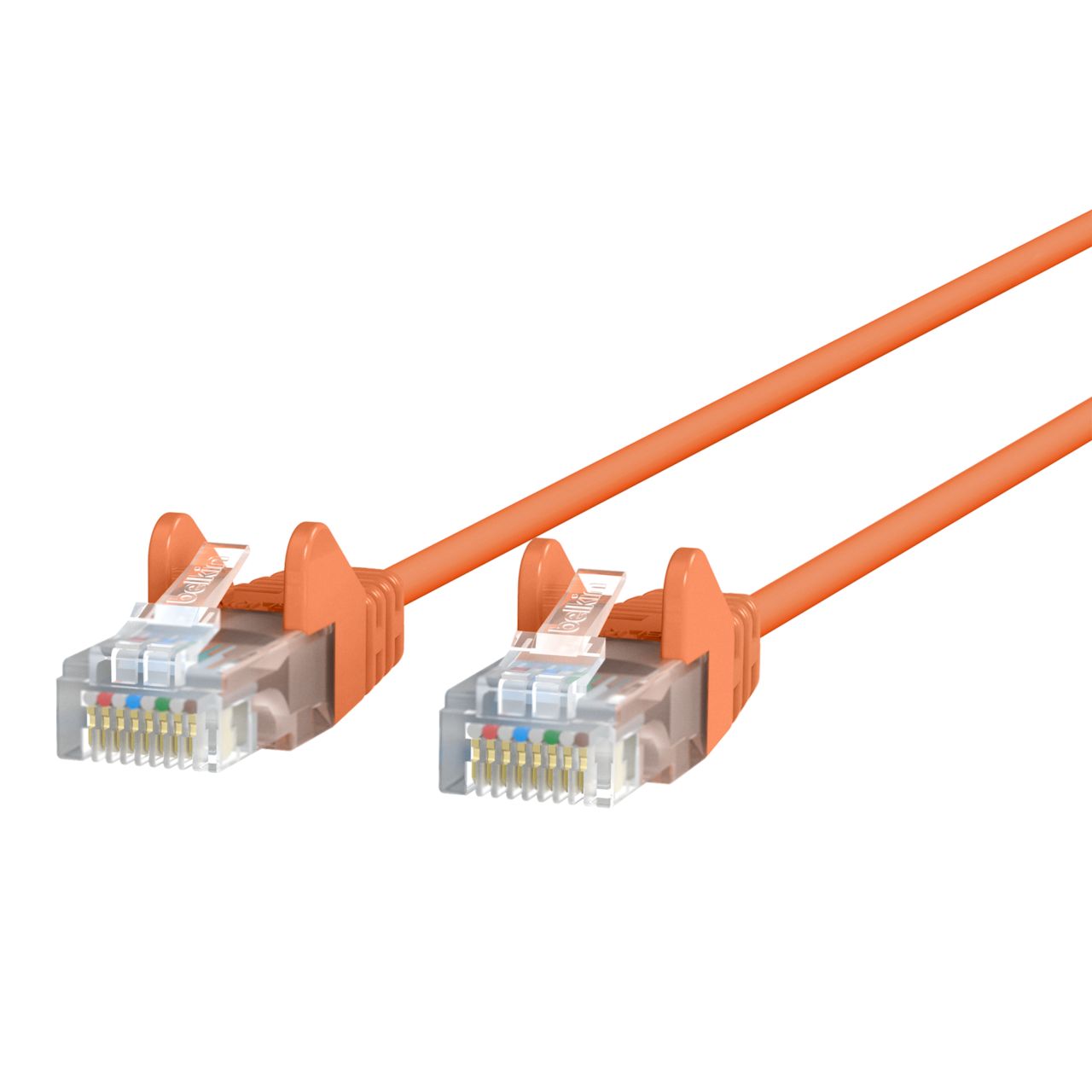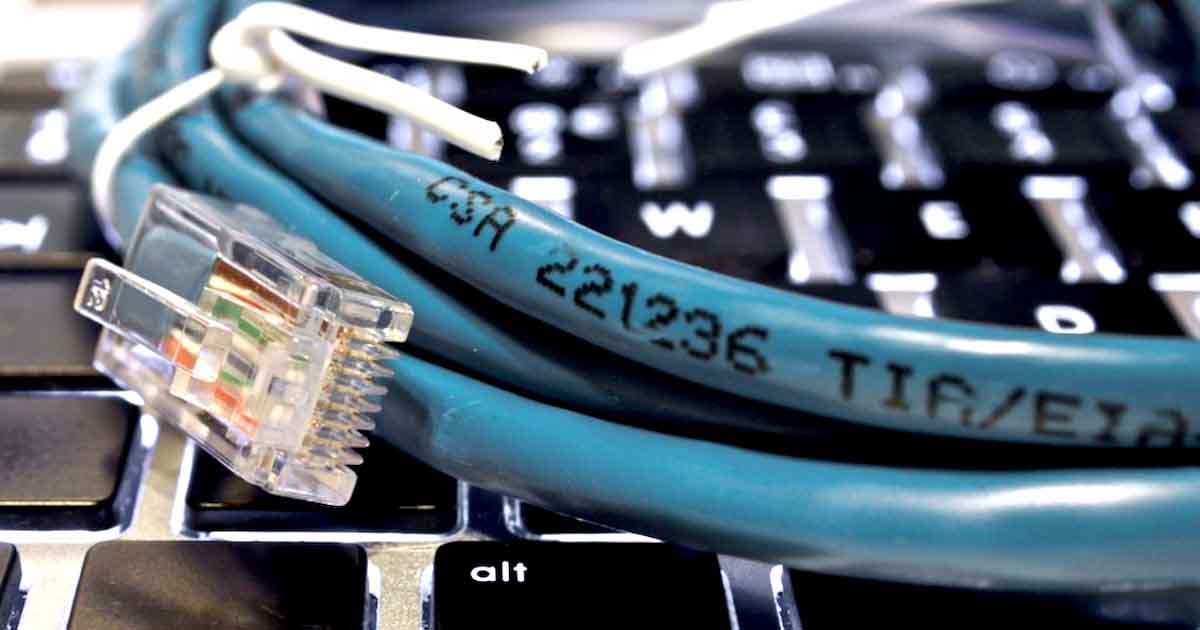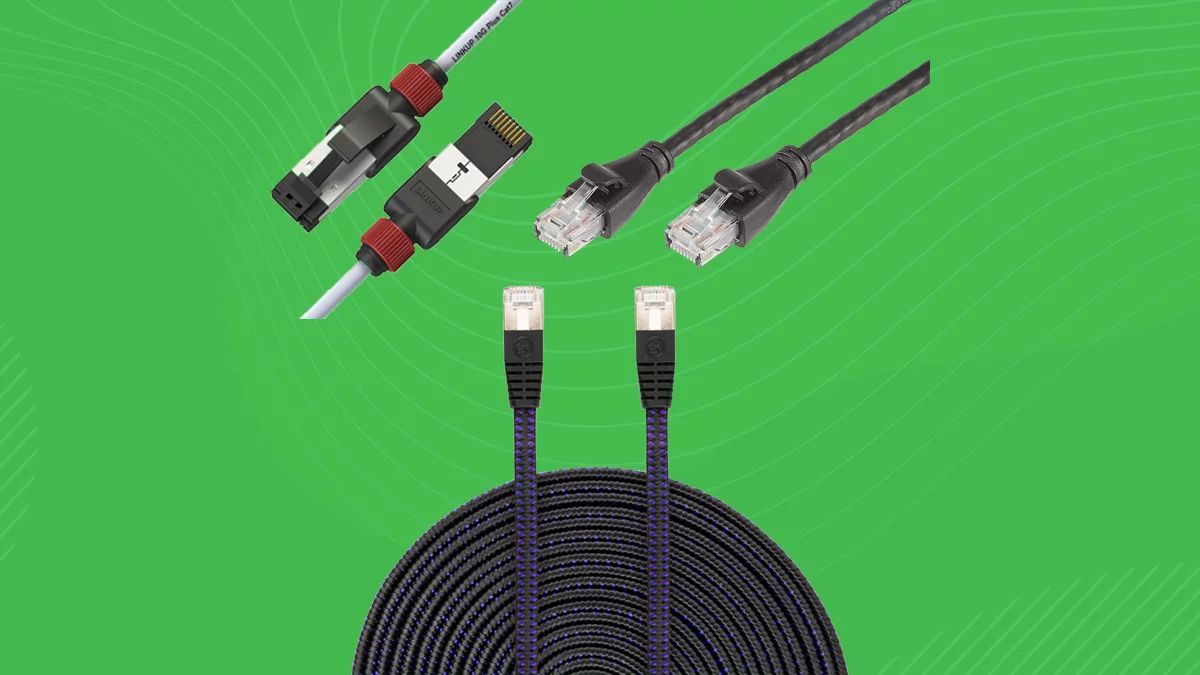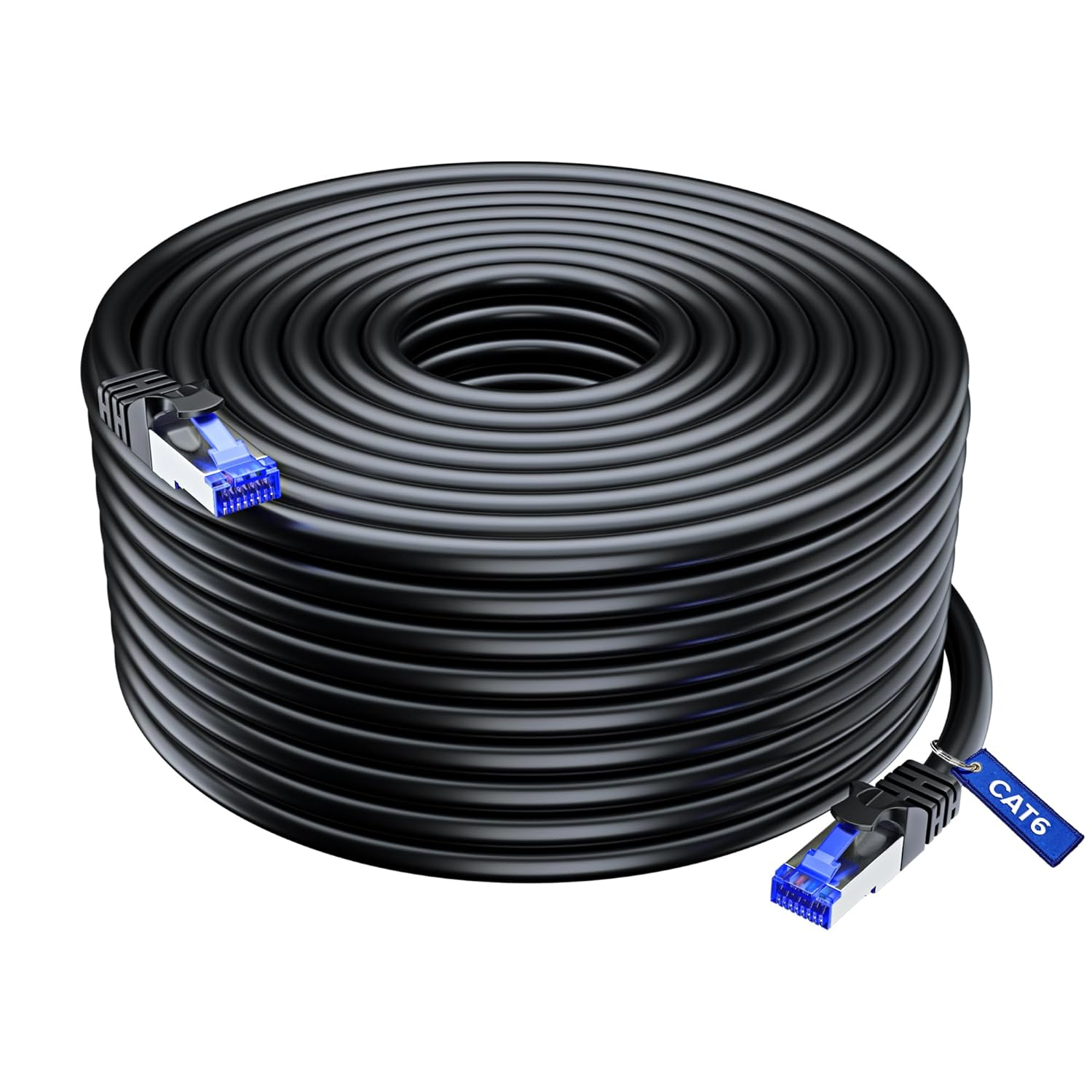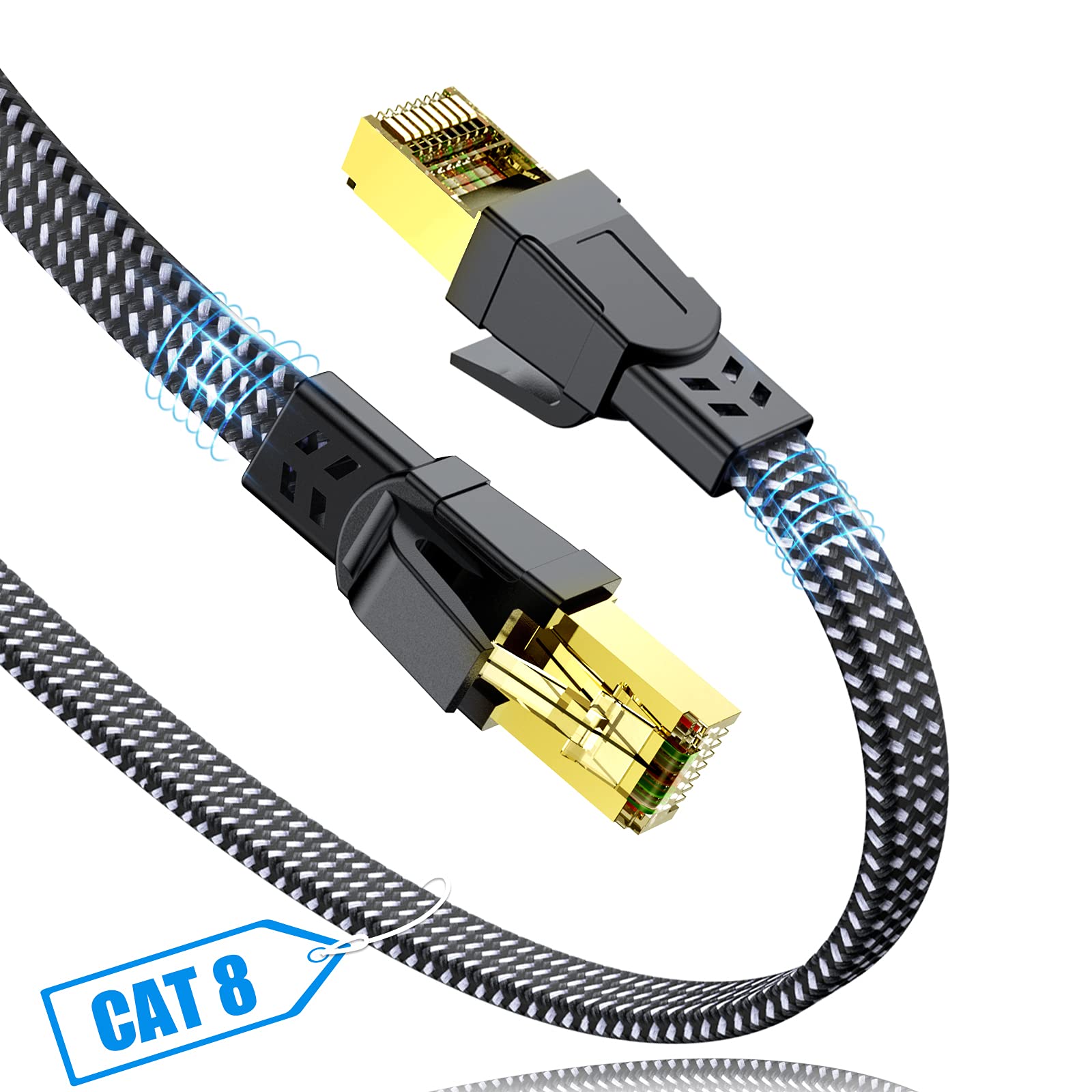Introduction
Welcome to the world of networking, where devices both big and small are connected to each other through various cables and wires. In the realm of local area networks (LANs), Ethernet cables play a crucial role in transmitting data from one device to another. And at the heart of Ethernet connectivity are Ethernet patch cables, the unsung heroes that ensure seamless communication between devices.
An Ethernet patch cable, also known as a network cable or an Ethernet cable, is a type of cable used to connect devices like computers, routers, switches, and servers within a LAN. It serves as the lifeline of network communication, enabling the transfer of data, signals, and power between devices effectively and efficiently.
These cables come in different types and categories, each with its own characteristics and capabilities. It’s important to choose the right Ethernet patch cable for your specific needs to ensure optimal performance and reliability.
In this article, we will explore the different types of Ethernet patch cables available in the market, including Cat5e, Cat6, and Cat6a cables. We will discuss their features, differences, and benefits, giving you the necessary knowledge to make an informed decision when selecting the right Ethernet patch cable for your networking requirements.
So, if you’re ready to dive into the world of Ethernet patch cables and discover how they can enhance your networking experience, let’s begin exploring the fascinating realm of these essential networking components.
What is an Ethernet Patch Cable?
An Ethernet patch cable, also known as a patch cord or patch lead, is a type of cable specifically designed to connect devices within a local area network (LAN). It is commonly used to connect computers, routers, switches, and other networking devices, allowing them to communicate and share data efficiently.
The Ethernet patch cable consists of four pairs of twisted copper wires that are encased in a protective sheath. These twisted pairs help to minimize interference and crosstalk, ensuring a stable and reliable connection. The cables are terminated with connectors, typically RJ45 connectors, on both ends, making them plug-and-play compatible.
One end of the Ethernet patch cable is connected to a device, such as a computer or a router, and the other end is connected to a switch, hub, or another networking device. The Ethernet patch cable acts as a physical link between these devices, allowing them to send and receive data packets over the network.
These cables come in various lengths, typically ranging from one to 100 meters. The length of the cable will depend on the distance between the devices that need to be connected. It’s important to choose the appropriate length to ensure a seamless and error-free connection.
Ethernet patch cables are available in different categories, including Cat5e, Cat6, Cat6a, and Cat7, each with varying levels of performance and capabilities. These categories represent the cable’s ability to handle data transmission speeds and bandwidth. Choosing the right category of Ethernet patch cable is crucial to ensure that your network operates at its full potential.
Overall, Ethernet patch cables are the backbone of any wired network infrastructure. They provide a reliable and efficient means of communication between devices, allowing businesses and individuals to access and share information seamlessly. Whether you’re setting up a small home network or a large enterprise network, having high-quality Ethernet patch cables is essential for optimal performance and productivity.
Different Types of Ethernet Patch Cables
When it comes to Ethernet patch cables, there are different types available in the market, each offering unique characteristics and capabilities. Let’s take a closer look at the most commonly used types:
- Cat5e Ethernet Patch Cable: Cat5e (Category 5e) cables are one of the most widely used Ethernet patch cables. They can support data transmission speeds of up to 1000 Mbps and have a bandwidth of 100 MHz. Cat5e cables are suitable for most residential and small office networks and provide excellent performance for everyday tasks such as internet browsing, email, and file sharing.
- Cat6 Ethernet Patch Cable: Cat6 (Category 6) cables offer improved performance compared to Cat5e cables. They can support data transmission speeds of up to 10 Gbps and have a bandwidth of 250 MHz. Cat6 cables are ideal for demanding applications that require high-speed and reliable connections, such as streaming HD videos, online gaming, and large file transfers.
- Cat6a Ethernet Patch Cable: Cat6a (Category 6a) cables are an enhanced version of Cat6 cables. They provide superior performance and can support data transmission speeds of up to 10 Gbps at a bandwidth of 500 MHz. Cat6a cables are best suited for professional environments where high data transfer speeds and interference resistance are critical, such as data centers, server rooms, and large enterprise networks.
These Ethernet patch cables differ in terms of their construction and performance specifications. It’s important to consider your specific networking requirements and the desired data transmission speeds when choosing the right Ethernet patch cable for your setup.
There are also other types of Ethernet patch cables available, such as Cat7 and Cat8, which offer even higher data transmission speeds and bandwidth. These cables are designed for specialized applications and are typically used in professional networking environments where high performance is essential.
Whether you’re setting up a small home network or a large enterprise infrastructure, understanding the different types of Ethernet patch cables available will help you select the most appropriate cable for your needs. Choosing the right cable ensures a reliable and efficient network connection, allowing you to make the most out of your network devices and applications.
Cat5e Ethernet Patch Cable
Cat5e (Category 5e) Ethernet patch cables are one of the most commonly used types of Ethernet cables. They are designed to support data transmission speeds of up to 1000 Mbps (1 Gigabit per second) and have a bandwidth of 100 MHz. These cables are backward compatible with Cat5 cables but offer improved performance and reliability.
Cat5e Ethernet patch cables consist of four twisted pairs of copper wires that are tightly wrapped together and encased in a protective sheath. This twisted pair construction helps to reduce interference and crosstalk, ensuring a stable and consistent connection. The cables are terminated with RJ45 connectors on both ends, making them easy to plug and play.
These cables are commonly used in residential and small office networks, providing reliable performance for everyday applications such as internet browsing, email, and file sharing. They are suitable for connecting computers, printers, routers, and other devices within a LAN.
One of the advantages of Cat5e Ethernet patch cables is their affordability. They are cost-effective and readily available, making them a popular choice for home and small business networks. They offer a good balance of performance and price, making them suitable for most everyday networking needs.
However, it’s important to note that Cat5e cables have limitations when it comes to high-speed data transfer and long-distance connectivity. They may not be suitable for applications that require extremely fast data rates or long cable runs. For more demanding applications, such as streaming high-definition videos or online gaming, a higher category cable like Cat6 or Cat6a may be more suitable.
In summary, Cat5e Ethernet patch cables are an excellent choice for residential and small office networks. They provide reliable performance for everyday networking tasks and offer a cost-effective solution. While they may not be suitable for high-speed or long-distance applications, they are a dependable and widely used option for most home and small business requirements.
Cat6 Ethernet Patch Cable
Cat6 (Category 6) Ethernet patch cables are an upgrade from Cat5e cables and offer improved performance and reliability. They are designed to support data transmission speeds of up to 10 Gbps (10 Gigabits per second) and have a bandwidth of 250 MHz. Cat6 cables are backward compatible with Cat5 and Cat5e cables, making them a suitable option for both new installations and upgrades.
One of the key advantages of Cat6 Ethernet patch cables is their ability to handle higher data transfer speeds. With a tenfold increase in performance compared to Cat5e cables, they are ideal for bandwidth-intensive applications such as streaming HD videos, online gaming, and large file transfers. They provide a more stable and reliable connection, minimizing latency and lag.
Cat6 Ethernet patch cables feature a more robust construction compared to Cat5e cables. They have tighter specifications for twists per inch and improved shielding to reduce crosstalk and interference, resulting in better signal quality. This enhanced performance makes Cat6 cables suitable for environments with higher levels of electromagnetic interference, such as larger offices and commercial buildings.
These cables also offer better performance over longer distances. While Cat5e cables have a maximum recommended length of 100 meters (328 feet), Cat6 cables can reliably transmit data up to 55 meters (180 feet) at 10 Gbps speeds. For shorter cable runs, Cat6 cables can support even higher data rates.
When it comes to installation, Cat6 Ethernet patch cables use the same RJ45 connectors as Cat5e cables, making them easy to connect to compatible devices. However, it’s important to ensure that the entire network infrastructure, including networking devices and wall jacks, is also Cat6 compliant to fully benefit from the enhanced performance.
While Cat6 Ethernet patch cables offer improved performance and stability, they are typically slightly more expensive than Cat5e cables. However, the cost difference is often justified by the increased speed and reliability they provide, especially for networks with higher data transfer demands.
In summary, Cat6 Ethernet patch cables are an excellent choice for those seeking higher performance and faster data transfer speeds. They are suitable for demanding applications and are favored in environments where a stable and reliable connection is essential. Whether it’s for gaming, streaming, or large file transfers, Cat6 cables provide the performance and quality required for today’s networking needs.
Cat6a Ethernet Patch Cable
Cat6a (Category 6a) Ethernet patch cables are an enhanced version of Cat6 cables, offering even higher performance and capabilities. They are designed to support data transmission speeds of up to 10 Gbps (10 Gigabits per second) at a bandwidth of 500 MHz. Cat6a cables provide superior performance and reliability, making them suitable for demanding networking environments.
One of the key advantages of Cat6a Ethernet patch cables is their ability to handle 10 Gigabit Ethernet speeds over longer distances. While Cat6 cables are limited to 55 meters (180 feet) for 10 Gbps transmission, Cat6a cables can reliably transmit data at that speed up to 100 meters (328 feet). This extended range makes Cat6a cables ideal for larger networks and applications that require high-speed connectivity across significant distances.
Like Cat6 cables, Cat6a cables have a more robust construction and tighter specifications. They feature improved twisting of the copper wire pairs and increased shielding, which significantly reduces crosstalk and interference. This enhanced shielding also makes Cat6a cables less susceptible to alien crosstalk, electromagnetic interference, and signal degradation, ensuring a stable and reliable connection.
Additionally, Cat6a cables can provide better performance in high-density environments, where multiple cables and devices are close to each other. The increased shielding and improved design help mitigate the issues caused by neighboring cables and devices, allowing for smoother and more reliable network performance.
Another notable feature of Cat6a Ethernet patch cables is their ability to support Power over Ethernet (PoE) applications. PoE technology enables power and data transmission over a single Ethernet cable, eliminating the need for separate power cables. Cat6a cables have better power handling capabilities, allowing for more efficient PoE operation and enabling the use of high-power devices such as IP cameras, wireless access points, and VoIP phones.
While Cat6a cables provide superior performance and capabilities, they are typically more expensive than Cat6 cables. However, the cost is justified by the increased performance and versatility they offer, particularly in environments where high-speed data transmission, longer cable runs, and PoE applications are required.
In summary, Cat6a Ethernet patch cables are the go-to choice for high-speed, high-performance networking environments. With their ability to support 10 Gigabit Ethernet speeds at extended distances, enhanced shielding, and support for PoE applications, Cat6a cables provide the reliability and performance needed in data centers, server rooms, and other professional networking settings.
Choosing the Right Ethernet Patch Cable
When it comes to selecting the right Ethernet patch cable for your networking needs, it’s important to consider a few key factors. Here are some considerations to keep in mind:
- Data Transmission Speed: Determine the required data transmission speed for your network. If you have high-bandwidth demands, such as streaming HD videos or online gaming, consider Cat6 or Cat6a cables that can support faster speeds, up to 10 Gbps.
- Distance: Take into account the distance between the devices that need to be connected. If you have long cable runs, you may need Cat6 or Cat6a cables that can reliably transmit data over longer distances without signal degradation.
- Application: Consider the specific applications and use cases for your network. If you have any specialized requirements, such as Power over Ethernet (PoE) or high levels of electromagnetic interference, Cat6a cables may be more suitable due to their enhanced capabilities in these areas.
- Budget: Determine your budget for Ethernet patch cables. Cat6 and Cat6a cables are generally more expensive than Cat5e cables due to their superior performance and features. Consider your budget limitations while ensuring that the chosen cable meets your performance needs.
- Future-Proofing: Consider your future networking needs. If you anticipate network upgrades or higher speed demands in the future, it may be wise to invest in higher category cables, such as Cat6 or Cat6a, to ensure long-term compatibility and performance.
- Quality and Durability: Always consider the quality and durability of the Ethernet patch cables. It’s important to choose cables that are well-constructed, have proper shielding, and use high-quality connectors to ensure a stable and reliable connection.
By considering these factors, you can select the most appropriate Ethernet patch cable for your specific networking requirements. Whether it’s Cat5e for basic residential or small office use, Cat6 for higher performance needs, or Cat6a for professional environments and more demanding applications, choosing the right Ethernet patch cable will ensure a seamless and reliable network connection.
Benefits of Using Ethernet Patch Cables
Ethernet patch cables offer several benefits that make them the preferred choice for wired network connections. Here are some advantages of using Ethernet patch cables:
- Reliable and Stable Connection: Ethernet patch cables provide a reliable and stable connection between devices. Unlike wireless connections, Ethernet cables are not susceptible to interference from other devices or obstacles like walls. This ensures consistent network performance and minimizes signal dropouts.
- High-Speed Data Transfer: Ethernet patch cables support high-speed data transfer, allowing for fast and efficient transmission of large files, streaming of HD videos, and online gaming. With options like Cat6 and Cat6a cables, you can achieve even higher data transfer rates, ensuring smooth and uninterrupted network experiences.
- Low Latency: Ethernet patch cables offer low latency, reducing delays in data transmission. This is crucial for activities that require real-time communication, such as online gaming or video conferencing, where even a slight delay can impact the user experience.
- Secure Connection: Wired Ethernet connections provide a more secure connection compared to wireless networks. It is much harder for hackers to intercept and gain unauthorized access to data transmitted through physical cables, adding an extra layer of security to your network.
- Easy Installation: Ethernet patch cables are easy to install and use. With standard connectors like RJ45, they can be plugged into compatible devices without the need for any additional configuration. This makes them a convenient and hassle-free solution for networking needs.
- Cost-Effective: Ethernet patch cables are a cost-effective solution for establishing a wired network infrastructure. They are typically less expensive than other networking options and provide reliable performance for everyday tasks. Investing in high-quality Ethernet patch cables ensures long-term value and reduces the need for frequent replacements.
- Compatibility: Ethernet patch cables are compatible with a wide range of devices, including computers, routers, switches, and servers. They can be used in various networking environments, from small residential setups to large enterprise networks.
- Flexibility and Scalability: With Ethernet patch cables, it’s easy to add or remove devices from your network. This scalability allows you to expand your network as your needs grow, making Ethernet patch cables a flexible solution that can adapt to changing requirements.
Overall, Ethernet patch cables offer a reliable, fast, and secure means of connecting devices in a network. Whether it’s for home use or a business environment, using Ethernet patch cables ensures stable and efficient network communication, enabling you to make the most out of your connected devices and applications.
Conclusion
Ethernet patch cables are essential components in any wired network infrastructure. They offer a reliable, stable, and high-speed connection between devices, facilitating seamless data transfer and communication. By choosing the right Ethernet patch cable for your specific networking needs, you can ensure optimal performance and efficiency.
We explored the different types of Ethernet patch cables, including Cat5e, Cat6, and Cat6a. Each category has its own characteristics and capabilities, catering to various networking requirements. Cat5e cables offer cost-effective performance for everyday tasks, while Cat6 and Cat6a cables provide higher speeds and capabilities for more demanding applications.
When selecting an Ethernet patch cable, it’s important to consider factors such as data transfer speed, distance, application, budget, future-proofing, and quality. By evaluating these factors, you can make an informed decision and choose the cable that best suits your needs.
Using Ethernet patch cables brings numerous benefits, including a reliable and stable connection, high-speed data transfer, low latency, enhanced security, easy installation, cost-effectiveness, compatibility, and scalability. These advantages make Ethernet patch cables a preferred choice for both residential and commercial networking environments.
Whether you’re setting up a home network, a small office, or a large enterprise infrastructure, investing in high-quality Ethernet patch cables ensures efficient and seamless communication between devices. By harnessing the power of wired connections, you can enjoy fast and reliable network performance, enabling you to fully utilize the potential of your connected devices and applications.
So, whether you’re streaming your favorite shows, engaging in online gaming, or conducting important business communications, Ethernet patch cables provide the backbone for reliable and high-performance networking. Embrace the power of Ethernet patch cables and unlock the full potential of your network!







